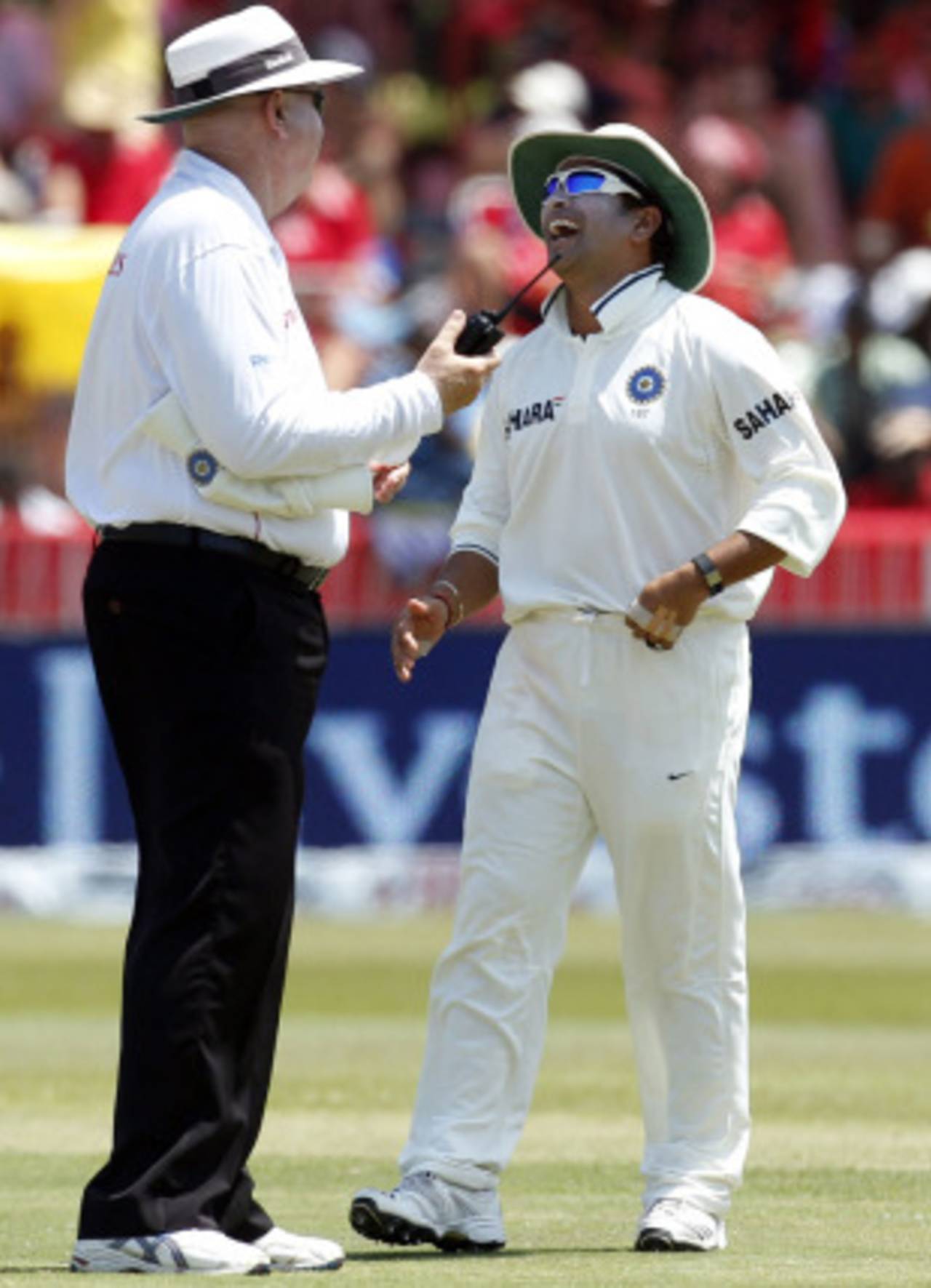Empowered or undermined?
Umpires do not wish to become obsolete, but they know they cannot stand in the way of all-embracing progress
Ivo Tennant
22-Mar-2011

Just a supernumerary in a white coat? The role of an umpire has had to evolve with technology • Associated Press
The umpire's word is final. At least it was until technology determined it was not. In all probability this divide between the aesthetic traditionalists and the thrusting modernisers will never be bridged. That does not really matter, in one sense, for Hawk-Eye, Snicko, Hot Spot or their offspring will be with us until the end of cricketing time.
The first-class umpires have more influence than might be imagined by those who these days believe an official to be little more than a supernumerary in a white coat. Witness their achievement in obtaining a longer tea break in the 40-overs competition in England, for example. Yet they do not wish to go the way of wheelwrights and footmen. They do not want to become obsolete. They know they cannot stand in the way of all-embracing progress.
The expense of implanting such cricketing technology is huge, but that does not seem to concern television producers. Hawk-Eye visually tracks the path of the ball and displays a record of its most statistically likely path as a moving image. It is also used to predict the future path of a ball. Hot Spot is an infra-red imaging system used to determine whether the ball has struck the batsman, bat or pad. It requires two infra-red cameras, on opposite sides of the ground above the field of play, that are continuously recording an image. The Snickometer is composed of a sensitive microphone located in one of the stumps, connected to an oscilloscope that measures sound waves. When the ball nicks the bat, the oscilloscope trace will pick up the sounds. At the same time, a high-speed camera records the ball passing the bat.
A trialling of referrals in Test matches preceded the ICC's Decision Review system, in which players openly questioned the decisions of officials. And whatever fate was befalling Allen Stanford, he did at least champion decision-making by three umpires in consultation on his attractive ground in Antigua. Wisden regarded this method as the pick of a complicated lot. It was felt that a captain had enough to do already without having to contemplate a potentially match-turning issue.
Although endless analysis of the same delivery can become tediously repetitive, there is little doubting that the enjoyment and appreciation of television viewers is enhanced by techno-wizardry. The spectator on the ground will be less enamoured of long pauses for referrals and appeals given the sluggish over rate that is already a part of the game. Ultimately the bottom line is simply whether this gadgetry assesses appeals and dismissals better than the on-field umpire.
Yes, say Sky Sports, who have led the way with such innovations. Their executive producer, Paul King, believes the introduction of various technologies into the broadcasting of cricket has been of "massive benefit" to viewers in the UK and around the world. "The key to success is to pick the right ones," he says. "The technologies that have changed the way cricket is broadcast, including Hot Spot, Hawk-Eye, Snicko and Ultra Motion provide genuine benefit for viewers and our commentators rather than just being there for the sake of it."
Sky do not obtain feedback from viewers over whether or not their knowledge and pleasure obtained through such technology is significant in renewing their subscriptions, but there do not appear to be many outraged-of-Tunbridge Wells types. The issue is the number of viewers, not the coverage. The sticking point with that is always the quality or otherwise of the commentators.
No, says the great Dickie Bird. "Nearly every decision is referred to electronic aid - but there is never a perfect decision. For close run-outs and whether the ball is over the goal line in football, I would be in favour of it. But Hawk-Eye cannot tell the state of the pitch, the bounce of the ball and how much it has swung or seamed. I reckon balls that are shown to be clipping leg stump would in fact miss it by 18 inches. And spectators pay a lot of money nowadays to watch Test cricket and want to see the game flowing.
"How can it be said who the best umpires in the world are today? The authority has been taken away from them, and for that I feel very sad. I took pride in making what I thought was a good decision, but now that has gone. Ask any umpire and he will say that he would prefer to make his own decision on the field. People in Barnsley come up to me in the street and ask when that is going to happen again - it won't."
This is the ninth article in a series on cricket's innovations, sponsored by SAAB. Next week, the development of batting styles to meet a changing game.